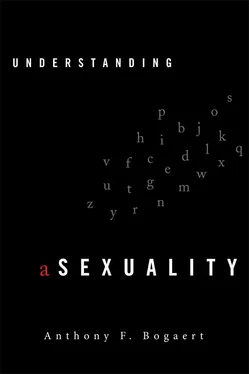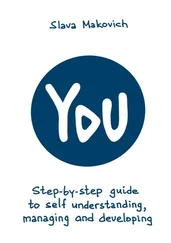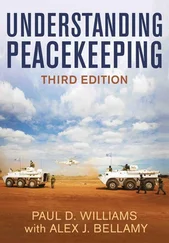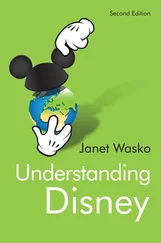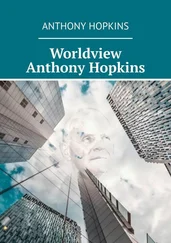Our thoughts are often organized into “knowledge structures” or “schemas.” One form of knowledge structure is a script. A script is a cognitive generalization about the “appropriate sequence of events in a particular context” (Schank & Abelson, 1977, p. 41). In other words, just as a movie or a TV script tells an actor what to do and say (and when to do and say it), our cognitive scripts prompt us to do and say things in a specific order in a specific context. We may not realize that we carry around in our heads these cognitive “scripts” of what to do and say in various contexts, but we do. This type of cognitive processing is often automatic and unconsciously performed, and can provide very useful shortcuts for dealing with many contexts in the world around us. Indeed, it would be extremely time consuming and taxing if we had to deliberate about every move we make without relying on such mental shortcuts.
In sexual contexts, people also rely on scripts. Thus, humans engage in rather automated sequences of sexual behavior, dealing with behavioral contingencies in a rather orderly way ( First I will kiss her, then, if she responds to this, I will touch her breast, then I will… ). Of course, it takes time, it requires watching others perform these actions, and it takes practice (in keeping with the acting metaphor, let’s call it rehearsal !) to make the sexual scripts unfold in a relatively seamless way, and sexual behavior is not without its complications, to say the least!
Sexual fantasies can be construed as a form of sexual script (see also chapter 5). Sexual fantasies may be very brief—just flashes of a sexy image bouncing around in our heads—but they can also be more elaborate, with a dramatic storyline or plot. If one has repeated fantasies, this may allow “rehearsal” to occur, so that we ingrain in our minds (potentially adaptive) sexual sequences of behavior—that is, sexual scripts.
Sexual fantasies, along with other cognitive processes, are important in understanding asexuality. For example, do asexual people have sexual fantasies or, if they are asexual but romantic, just romantic ones? If some asexual people do have sexual fantasies, what does this mean about their sexual attractions, given that sexual fantasies often closely reflect sexual attractions? Would such people truly lack sexual attraction? [8] Indeed, sexual fantasies are so closely linked to one’s sexual attractions that Storms’s model of sexual orientation is sometimes referred to as the 2D fantasy model of sexual orientation (Storms, 1980).
We will be further discussing this issue and how other cognitive elements help us to understand sexuality and asexuality in various chapters (see, for instance, chapter 5 on masturbation and chapter 12 on humor).
D is for desire . Sexual desire can be defined as “a feeling that includes wanting to have a sexual experience, feeling receptive to a partner’s sexual initiation, and thinking and fantasizing about sex” (Rosen et al., 2000, p. 191). Desire is another word for “lust,” or, in more colloquial terms, “horniness”—that tingly feeling that makes people engage in sexual activity and, perhaps, have a release of sexual tension: orgasm.
Desire is related to all four of the above: attraction, arousal, behavior, and cognition. It is also, for example, very closely related to people’s sexual attractions, as it usually is in reference to others. But desire and attraction also can be decoupled. One of the reasons for this decoupling is that there are separate bodily mechanisms underlying them. Circulating testosterone, for example, can have a large impact on desire, but it does not alter the direction of one’s sexual attractions. [9] I am using testosterone here as an example, but I don’t want to imply that this hormone is the only factor at work. There are a number of factors other than testosterone—including psychosocial ones, for example—that influence sex drive.
In the checkered early days of reparative therapy, gay men were administered high levels of testosterone, with the idea being that a lack of sexual interest in women occurred in men because of an insufficient amount of this male-associated hormone (Meyer-Bahlburg, 1977). The bottom line, however, was this: Testosterone did not make gay men heterosexual; it just made them horny! There were a couple of problems with this reparative approach using testosterone, aside from, of course, the ethical issues. First, testosterone, although found in higher concentrations in men than women, exists in both sexes. So, it is misleading to suggest that it is a male-only hormone (see also chapter 6). Second, prior to birth, different levels of exposure to testosterone may have permanent, organizing effects on the brain (as they do on the body), and may ultimately affect sexual attractions and one’s orientation development (see also chapter 13). But in adolescence and adulthood, testosterone has “activating” effects, working like a kind of fuel on whatever disposition (i.e., brain organization) is already there in the first place. So it is not surprising that gay men, when given a boost of testosterone, became more interested in sexual activities generally but did not change their underlying attraction to men. So, in short, desire and attraction have different underlying bodily mechanisms, and hence are “decoupleable.”
In many people’s minds, asexual people must lack sexual desire (i.e., have no interest whatsoever in sexual activities). Indeed, very low desire or a lack of desire is sometimes put forth as an important definition of asexuality (Prause & Graham, 2007). I, too, think this definition of asexuality is a reasonable one, at least in some ways (Bogaert, 2006b; Bogaert, 2008). For example, I think lack of desire is more viable than lack of sexual behavior in defining asexuality.
But why I do prefer to define asexuality as a lack of sexual attraction (Bogaert, 2006b)? For one, if a person truly lacks sexual desire, then there is likely no sex drive to fuel any underlying sexual attractions, if indeed such underlying (perhaps) hidden attractions exist; thus, someone with an absence of desire would lack sexual attraction for others as well, although they still might have romantic attractions. Second, the reverse is not necessarily true: if one lacks sexual attraction, one does not necessarily have no sexual desire or drive (see chapter 5 on masturbation). Third, sexual attraction captures the core element of sexual orientation, so, if one wants to argue that asexual people do not have a traditional sexual orientation (i.e., gay, straight, bi) but instead have a unique asexual one, then a lack of sexual attraction to others is the important criterion (Bogaert, 2006b). Fourth, I think that a lack of desire may not capture accurately the phenomenon of asexuality, at least based on existing research. There is support for this view in two recent studies. Recent research on self-identified asexuals (Prause & Graham, 2007; Brotto et al., 2010) shows that they do not necessarily have a lower desire for sexual activity, but they clearly have a lower desire for sexual activity with others ; in other words, they lack sexual attraction to others. Thus, a lack of sexual attraction is likely a good overarching definition of asexuality from a number of perspectives. [10] That having been said, more research needs to be done on desire issues in asexual people. One issue that needs to be clarified is what asexual people mean by “no sexual desire” and “no sexual attraction,” along with how they discriminate between these two aspects of sexuality. Most sexologists would likely indicate that desire refers to sex drive and interest, while sexual attraction refers to one’s sexual inclination toward others. Most sexologists would also likely assert that there is a fair degree of overlap in what these two aspects capture about sexual expression for most people (Bogaert, 2006b). However, some (perhaps many) laypeople may use the terms “desire” and “attraction” differently than most sexologists do. For example, some people who identify as asexual may prefer to describe their asexuality as an issue of low/no desire, because they are more familiar with the word “desire,” rather than “attraction,” within the context of sexuality, and prefer the word “attraction” to describe romantic and affectionate orientations (and not necessarily a “sexual” inclination or orientation). Thus, these asexual people may have felt little “sexual” attraction for a partner of a particular gender (in the traditional sexual orientation sense), but still have strong romantic and affectionate attraction for these partners (see, for example, work by Lisa Diamond, 2003b). Consequently, they still describe their “attraction” for partners of a certain gender because of their romantic feelings/inclinations toward them. Note: A similar point was made earlier in the chapter on romantic versus sexual attractions.
Читать дальше
